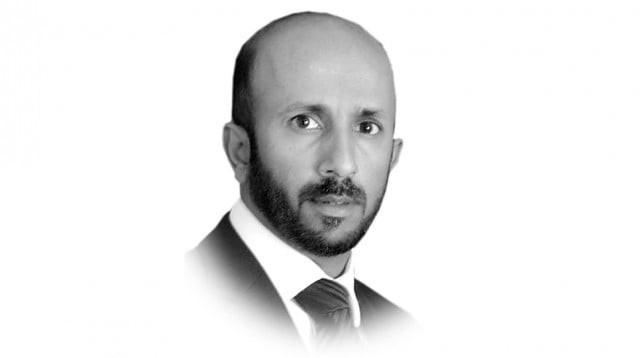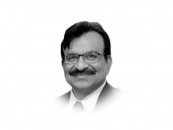Understanding Faisal Shahzad

Understanding Faisal Shahzad
The realisation that he was more a goof than a dangerous extremist was difficult to swallow. Shahzad decided to make a run for it. At 630 pm the same evening he called Emirates to buy a one-way ticket on flight EK 202. His dramatic last minute arrest is now history.
Shahzad is not the usual suspect. His father is a respected retired air vice-marshal. An MBA from the University of Bridgeport in Connecticut, he was not a regular at any of the local mosques where Fox TV could lay the blame. He was not fired by his US employer, but chose to quit his job as a financial analyst. His wife attended the University of Colorado and does not fit the hijab-wearing stereotype.
Shahzad leaves us flabbergasted at how an ordinary kid from a liberal family graduated to a bomber. The trite answer: radicalised by bloodshed in Iraq and Afghanistan or the drone attacks in Fata is no longer adequate. To understand Shahzad’s world, try looking through the lens presented by journalists Jamie Bartlett and Richard Reeves. In an article published earlier this year they argued that “The battle against home grown terrorism is not principally an ideological or religious one. Young Muslims are drawn, like young people throughout the ages, to excitement, rebellion and a desire to be ‘cool’.”
Look again at Shahzad’s pictures: the designer sunglasses, the fashionably trimmed beard, the smirk for the camera, and it is difficult to miss the urge of a young man cultivating the “I am so cool” image. Shahzad loved to shop at Macys and was a fan of “Everybody loves Raymond”. He fits well into the profile of a new face of American home grown terror: “raised on a diet of traditional Islam and western popular culture he was attracted to the glamour and excitement that al Qaeda purported to offer.”
Bartlett and Reeves’ prescription: “First, demystify terrorist lives and deaths. The life of a terrorist is that of a criminal, tedious, lonely and punctuated by fear. Terrorist incompetence must be highlighted.” Shahzad may be the ideal candidate for such an effort. He left the car keys of his getaway vehicle and a cell phone in the smoking Nissan Pathfinder.
Second, “expose the al Qaeda ideology as thin and unable to withstand criticism. Instead of being afraid, let them circulate freely. Young people will be drawn to them regardless; better that it is left in the open. Young Muslims who turn to violence tend to be less well read than those who remain peaceful. Liberal values of free speech and dissent are central to the destruction of the al Qaeda brand”.
Lastly, “welcome non-violent forms of radicalism. Participation in demonstrations is much higher among the non-violent.” A radical is not the same as a terrorist. Yet in mainstream America young Pakistani Americans are afraid to publicly speak their mind for fear of being ostracised. A young Pakistani American doctor from Houston politely refused my farewell present on his visit to Karachi fearing harassment from US customs. The unwelcome present was a book titled The Reluctant Fundamentalist by Mohsin Hamid.
The fight against home grown terror may yield better results if mainstream America makes an effort to embrace young Muslims instead of fearing them. The fact that even after nine years in the US, Shahzad could claim not one white American as a friend is not only a vivid example of his failure to enter the melting pot but also a sad commentary on American society.
Published in the Express Tribune, May 27th, 2010.

















COMMENTS
Comments are moderated and generally will be posted if they are on-topic and not abusive.
For more information, please see our Comments FAQ